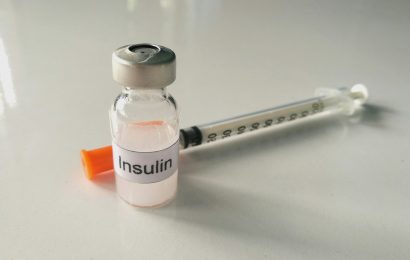The merry month of May is upon us, and that means it’s time to think about your vision! In 2003, the National Eye Institute declared May as Healthy Vision Month. Now is as good a time as any to make sure that you’re doing all that you can to protect your vision and prevent vision loss.
Diabetes and vision
If you have diabetes, chances are you know that if you’re not taking good care of yourself, your risk for certain types of complications goes up. Diabetic eye disease is a group of eye problems that can result in people with diabetes.
-- Keep an eye on your vision! Learn about preventive steps and treatments for diabetic retinopathy from retinal specialist Dr. Charles Wykoff. >>
Everyone with diabetes, both Type 1 and Type 2, is at risk for diabetic eye disease. This doesn’t mean that you’ll get it, but the risk is very real. Studies show that after having diabetes for 15 to 20 years, more than 90% of people with Type 1 and more than 60% of people with Type 2 will have diabetic retinopathy. Fortunately, there are steps you can take to prevent it. Keeping your diabetes “numbers,” such as A1C, blood glucose, blood pressure, and cholesterol, within your target range is crucial. And here’s the biggie: Make sure you get a dilated eye exam every year. Doing this is one of the most important steps you can take to prevent vision loss.
What is diabetic eye disease?
Diabetic retinopathy. The most common form of diabetic eye disease is called diabetic retinopathy, and it is the leading cause of blindness in adults. Diabetic retinopathy occurs as a result of damage to the small blood vessels in your retina. The retina is the tissue at the back of your eye that lets you see light. High blood glucose levels, over time, can make blood thick and sticky, leading to damage of blood vessels. If the blood vessels in the retina are affected, they can leak. Also, new, abnormal vessels can grow in the retina and, because they’re fragile, they too can leak. A vitreous hemorrhage can occur if the blood vessels bleed into the main cavity of the eye.
Diabetic macular edema. The macula is a very small part of the retina that’s responsible for sharp, detailed vision. If leakage or swelling occurs in the macula, diabetic macular edema can result. This can be present along with diabetic retinopathy. If not treated, it can cause blurry vision, distortion of straight lines, and even vision loss.
What are the symptoms of diabetic eye disease?
You can have diabetic retinopathy and/or diabetic macular edema and not know it. Having diabetic eye disease is no guarantee that you’ll have symptoms. On the other hand, you may have symptoms such as seeing spots (which are specks of blood) floating in your vision.
How is diabetic eye disease treated?
There are a number of treatments for diabetic eye disease, including laser treatment. This sounds a little like Star Wars, but laser treatment has made a significant difference in preventing blindness from diabetic retinopathy. Diabetic macular edema may be treated by laser, as well, but a new treatment, which involves injecting a medicine called ranibizumab (brand name Lucentis) into the eye, seems to be even more effective than laser alone in preserving vision.
Preventing diabetic eye disease
Diabetic eye disease is serious, but don’t let that frighten you. Take action and remember that there’s much that you can do to reduce your risk of all complications of diabetes. You’ve read it before, but let’s review that list again:
• Keep your A1C and blood glucose in your target range. For most people the target A1C is less than 7%; the blood glucose target is 70 to 130 before meals and less than 180 two hours after meals.
• Keep your blood pressure controlled. For most, the goal is below 140/80.
• Keep your LDL (“bad”) cholesterol in check. For most, the goal is less than 100 (or less than 70 if you have heart or blood vessel disease or are at very high risk of heart disease).
• Aim to be physically active most days of the week.
• Try to reach and stay at a healthy weight.
• If you smoke, make a plan to stop.
• Call your eye doctor right away if you have a sudden loss of vision, severe eye pain, or feel like a curtain is coming down over your eyes.
Above all…
Probably the single most important thing you can do to preserve your vision and prevent vision loss is to make sure you have a dilated eye exam every year. This is not the kind of eye exam you might get at the glasses store in the mall. A dilated eye exam involves the eye-care specialist (usually an ophthalmologist or retinal specialist) putting drops in your eyes to dilate (open) the pupils so that he can get a good view of your retina and other parts of your eye. The eye exam may include photographs and other special tests, too.
Because you may not have symptoms of diabetic eye disease, having an eye exam is the best way for your eye doctor to detect and treat any problems early on, before your vision is affected. Ideally, go to an eye care specialist who has experience in caring for and treating diabetic eye disease. You need a dilated eye exam at least once a year, and maybe more often if your eye doctor suggests it. Schedule yours this month. Remember: Eye problems and vision loss are preventable!




